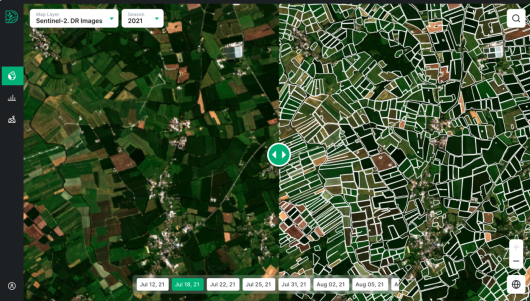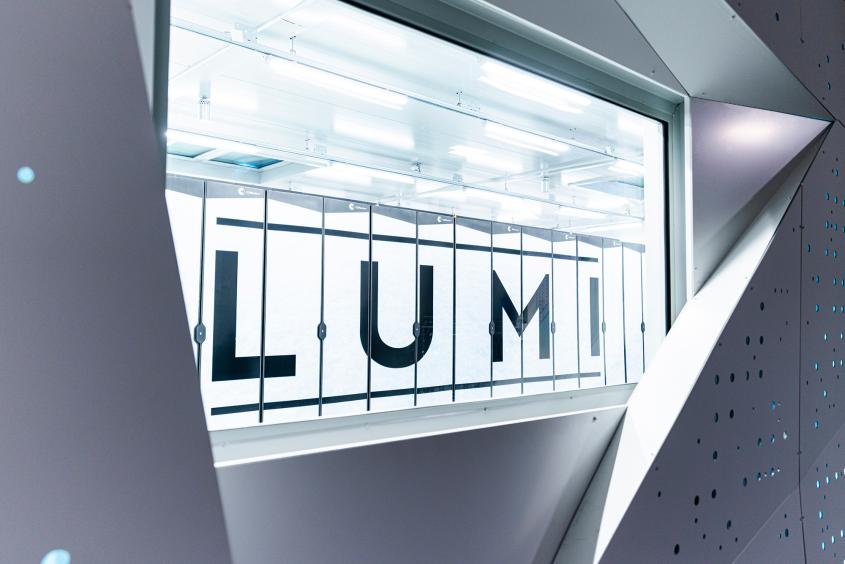The Norwegian company DigiFarm is on the verge of revolutionising agriculture with artificial intelligence (AI). Using advanced technology and access to European and national supercomputers, they are developing solutions that could have significant societal impact.
This is particularly important for better utilisation of agricultural land, understanding human-made interventions in nature, and preventing deforestation.

DigiFarm's precise field boundary data is a valuable tool for farmers and agricultural authorities worldwide. It helps them increase crop yields, adjust fertilisation and spraying, and create reliable crop forecasts. Additionally, the data can be used to assess environmental damage and monitor deforestation. In a time of raw material shortage, it is crucial that solutions quickly reach the market, especially given the challenges countries like Ukraine face with grain export.
Supercomputers, the key to massive product improvement
Through their research and development, DigiFarm has developed an AI model that can automatically detect field boundaries between fields. They train a deep neural network to identify boundaries and different elements in a field, such as grain, water, and trees. With 4 million hectares of training data from 57 countries, their model has become very large and requires significant computational power, or computational capacity, for training.
The model has recently been tested on LUMI, Europe's most powerful supercomputer, which Norway partly owns through Sigma2. LUMI is one of the world's leading platforms in AI and is equipped with some of the highest-performing data processors (GPUs) available on the market. Supercomputers like LUMI use highly advanced and expensive GPUs, which are far more powerful than those in home PCs. These GPUs provide dramatically faster calculations, essential for Machine Learning. The training process is significantly accelerated through access to large amounts of interconnected GPUs, and bigger models can be trained while saving time. The results DigiFarm has achieved on LUMI are extraordinary. It will shorten the path from testing to a market-ready product by about 6 months.
—LUMI represents a turning point for us and will undoubtedly greatly impact our ability to deliver innovative solutions for the agricultural sector. Access to LUMI allows us to accelerate development and significantly improve our model's precision," says Nils Helset, founder and CEO of DigiFarm.
—We have improved the model`s accuracy by 4.2% in just a few months. This is a major achievement in deep learning, as it becomes more difficult to achieve higher accuracy the longer a model is trained," says Helset.

4 million hectares of training data
DigiFarm has trained its model for 5 years before starting on LUMI, in commercial cloud environments and on the national supercomputers in Norway. They improve the resolution of images from Sentinel-2 satellites from 10 metres to 1 metre, using AI. With a comprehensive data foundation, the model learns to identify field boundaries and elements in a field, such as grain, water, and trees, and can now also detect the type of crop being grown.
In just 3.5 years, they have collected 4 million hectares of training data. Increased data volume makes the model complex and time-consuming to train. With access to many interconnected computational resources in the form of GPUs, they can accelerate the training process and significantly reduce the time it takes to develop a finished product. In just 2 months, DigiFarm has used a total of 104,000 GPU hours on LUMI for research and development.
DigiFarm improved the IoU accuracy of the model by 0.42. Intersection over Union (IoU) is a method that measures how accurately an artificial intelligence can identify and place objects in an image. This is a significant achievement in the field of deep learning, as it becomes increasingly difficult to achieve greater accuracy the longer a model is trained.

Untapped growth opportunities for companies
Access to national and European high-performance computing resources can be crucial for Norwegian companies wishing to conduct research and development to be competitive in a global market. Previously, it has mainly been researchers within academia who have driven the demand for such resources. Through Norwegian participation in the Digital Europe programme, this type of infrastructure is also made available to private and public actors. Now, demand is increasing among researchers in both academic and commercial environments.
—We must ensure Norwegian companies are on board when the train leaves the platform. This is especially relevant for Artificial Intelligence, where access to computational power is crucial for innovation and competitiveness, says Roger Kvam, head of the National Competence Centre for HPC, which has helped DigiFarm improve methods and utilise the national supercomputing (HPC) resources.
—DigiFarm perfectly illustrates how access to national supercomputers and Norway's share of LUMI can accelerate technological development and enable new products. Our role is to support companies like DigiFarm in optimally utilising these resources, says Kvam.
DigiFarm exemplifies a company that successfully retrieves Norway's investments in EU programmes:

—DigiFarm was proactive and received support from Innovation Norway to participate in national and European programs for technology and start-ups. In 2021, they raised 60 million NOK in the European Championship for Innovation – the EIC Accelerator programme in Horizon Europe. It is gratifying to see them seize the opportunities to use supercomputing and artificial intelligence to strengthen competitiveness and reach new markets," says Director Sverre H. Bjørnstad of Innovation Norway Innlandet.
—European cooperation, led by Sigma2 AS, enables researchers and companies to access larger training and computational resources than a small country like Norway can offer alone. Such collaborations ensure that Norwegian research gets access to a world-leading AI platform like LUMI. This provides a unique opportunity to compete globally and contribute to important research and innovation, says Gunnar Bøe, Managing Director of Sigma2.
About the National Competence Centre for HPC
The National Competence Centre for HPC (High-Performance Computing) is a collaboration between Sigma2 AS, SINTEF, and NORCE. The centre assists industry, small and medium-sized enterprises and public administration in developing competence in using advanced technology. This includes HPC, Artificial Intelligence (AI), and Machine Learning (ML).
The Competence Centre was established as part of the EU initiative EuroCC, with corresponding centres established all over Europe. The goal is to strengthen and support European industry in the global market.
Don't hesitate to reach out to the Competence Centre if you're interested in exploring how they can assist your company.